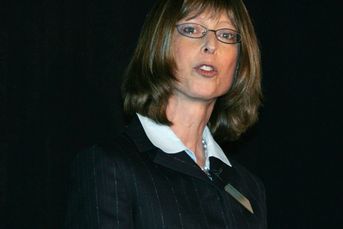Broker-hiring protocol seeing more dropouts
The brokerage industry's recruitment protocol, which is credited with reducing litigation when advisers change firms, might be becoming a victim of its own success
The brokerage industry’s recruitment protocol, which is credited with reducing litigation when advisers change firms, might be becoming a victim of its own success.
More than 700 firms have signed on since the pact was created by several wirehouse firms in 2004. More are expected to join, although at a slower rate than in the post-crisis year of 2009, when many brokers bailed from wirehouse firms.
The voluntary pact — signed by firms and overseen by the Securities Industry and Financial Markets Association — permits brokers to take basic customer contact information when they change firms. The simple process is widely believed to have averted disputes about non-compete agreements, and to have saved advisers lots of time and money.
That’s why it’s a bit surprising that some firms have dropped out. Through September, six firms have withdrawn from the pact this year. Four bailed out in 2010.
Because of “a termination that didn’t go so well, we felt it was best to withdraw” from the protocol this year, said Jill Bodossian, chief compliance officer at Retirement Design & Management Inc., who declined to discuss the incident further.
“If we were to begin recruiting en masse, we would probably rejoin,” she said.
Packerland Brokerage Services Inc. withdrew from the pact in April because of concerns about legal exposure if a recruit didn’t follow the rules, said Duane Johnson, director of sales.
“We predominantly get our [recruits] from independent firms, so they own their books,” he said.
In those cases, the protocol isn’t needed.
“Getting wrapped up in [a legal fight] is not worth it for a midtier brokerage firm like us, with 300 reps,” Mr. Johnson said.
NO REASON TO STAY
In many instances, a broker leaving a wirehouse to start a firm would sign the protocol to avoid legal trouble with the old firm. Now there is no longer a reason to remain on the list.
“It usually looks like [the withdrawing firms] are small independents who [moved] from a protocol member firm to a new situation, then decided they didn’t want the shoe on the other foot,” said Nancy Hendrickson, a securities attorney and founder of an eponymous law firm.
“If a firm reaches a mature point, where it’s not recruiting new reps, it would be silly to remain on the protocol,” said Brian Hamburger, founder of the compliance firm MarketCounsel and the Hamburger Law Firm LLC.
The protocol’s widespread adoption and use has also created a misconception that it’s the law.
“That’s just not the case,” Mr. Hamburger said. “We’re getting calls now from a number of people who never joined, [then] recruited advisers and ran into trouble for it.”
To be sure, though, far more firms are joining the pact than are withdrawing.
The big question is whether any of the wirehouses will pull out.
Citigroup Inc., Merrill Lynch & Co. Inc. and UBS Financial Services Inc. founded the pact and were its original signatories. Other big firms soon signed on.
But since then, the majority of signatories have been independent firms and founders of breakaways, looking either to ease their move to independence or take recruits from the big firms.
That isn’t exactly what the wirehouses intended, but so far, there is no indication that any of them might pull out.
‘WORKING WELL’
Morgan Stanley Smith Barney LLC isn’t considering withdrawing from the protocol, said spokesman James Wiggins.
Nor is Wells Fargo & Co., said spokesman Tony Mattera.
The protocol has “been working well from our perspective, particularly [when] clients may be anxious about the market turmoil, because it makes it easier for them to follow an adviser they may have known for a long time and who they trust,” she said.
Representatives of Bank of America Merrill Lynch and UBS didn’t respond to requests for comment.
The wirehouses’ view might change, Mr. Hamburger said.
“The more [the protocol is] used by independent RIAs, the more the wirehouses may find themselves on the short end of this and may no longer participate,” he said. “At that point, the protocol would become a worthless document.”
But wirehouses still recruit far more advisers from among themselves than they lose to independent channels, making the protocol a useful tool, Mr. Hamburger said.
Patrick Burns, managing attorney at The Law Offices of Patrick J. Burns Jr. PC, thinks that the wirehouses would be reluctant to pull out for public-relations reasons.
“They always claim they’re doing great” with recruiting, he said. “If they withdrew, it would undermine that message.”
Email Dan Jamieson at [email protected]
Learn more about reprints and licensing for this article.





